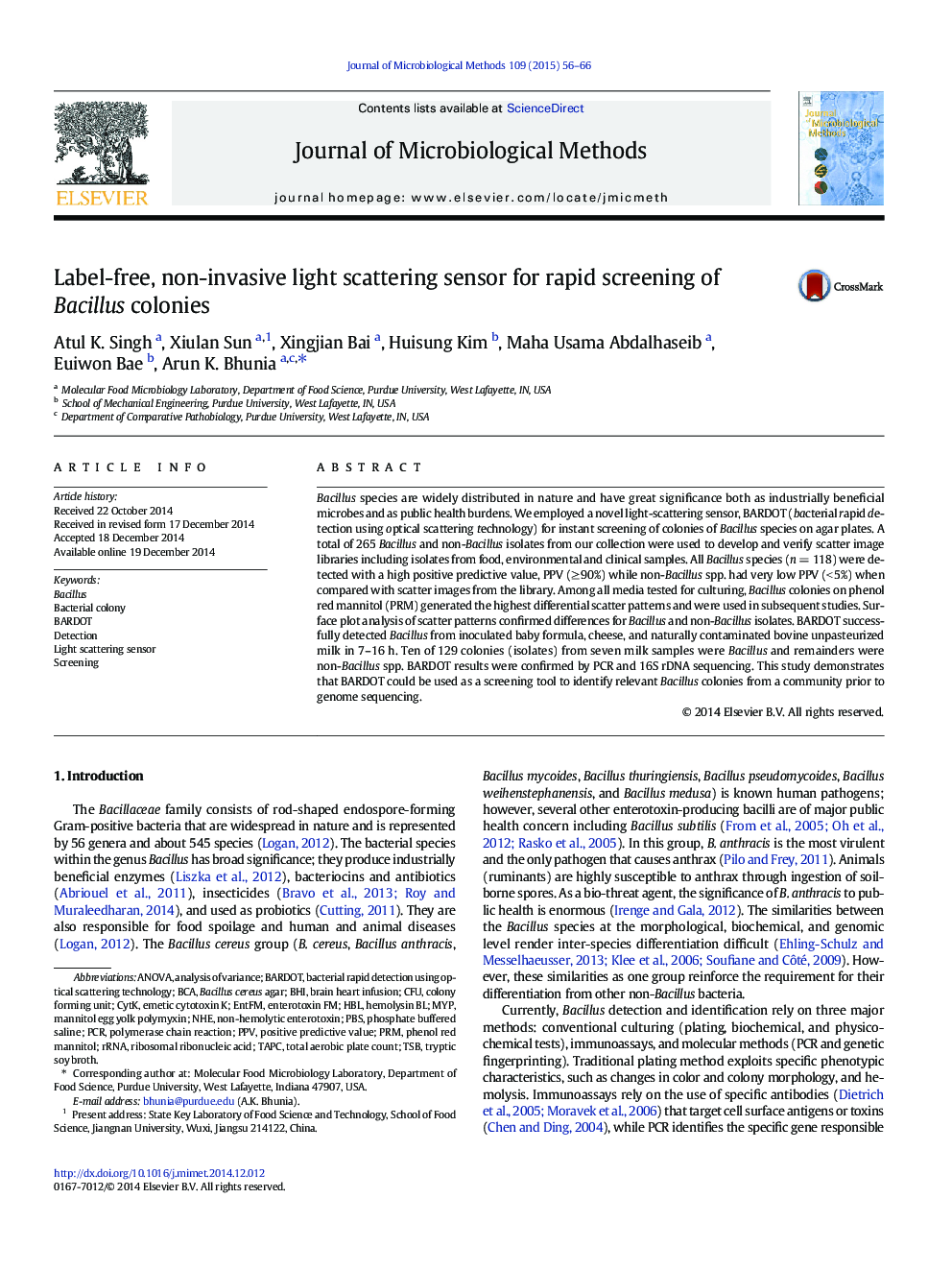| Article ID | Journal | Published Year | Pages | File Type |
|---|---|---|---|---|
| 2089888 | Journal of Microbiological Methods | 2015 | 11 Pages |
•Laser optical sensor for screening and detection of bacterial colony•Label-free, non-invasive, real-time and inexpensive method for Bacillus colony detection•Bacillus isolates from raw milk were detected with > 90% accuracy.•A companion pre-screening tool for molecular or immunological assays
Bacillus species are widely distributed in nature and have great significance both as industrially beneficial microbes and as public health burdens. We employed a novel light-scattering sensor, BARDOT (bacterial rapid detection using optical scattering technology) for instant screening of colonies of Bacillus species on agar plates. A total of 265 Bacillus and non-Bacillus isolates from our collection were used to develop and verify scatter image libraries including isolates from food, environmental and clinical samples. All Bacillus species (n = 118) were detected with a high positive predictive value, PPV (≥ 90%) while non-Bacillus spp. had very low PPV (< 5%) when compared with scatter images from the library. Among all media tested for culturing, Bacillus colonies on phenol red mannitol (PRM) generated the highest differential scatter patterns and were used in subsequent studies. Surface plot analysis of scatter patterns confirmed differences for Bacillus and non-Bacillus isolates. BARDOT successfully detected Bacillus from inoculated baby formula, cheese, and naturally contaminated bovine unpasteurized milk in 7–16 h. Ten of 129 colonies (isolates) from seven milk samples were Bacillus and remainders were non-Bacillus spp. BARDOT results were confirmed by PCR and 16S rDNA sequencing. This study demonstrates that BARDOT could be used as a screening tool to identify relevant Bacillus colonies from a community prior to genome sequencing.
Graphical abstractFigure optionsDownload full-size imageDownload as PowerPoint slide
